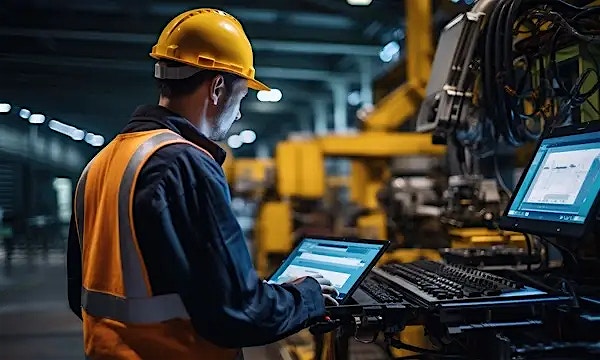The past 12 months have seen a series of unprecedented headwinds—the war in Ukraine, soaring energy prices, the accelerated climate emergency, the cost-of-living crisis and the challenges created by the ongoing impact of COVID-19 pandemic. These have all come together to create a challenging business environment and highly uncertain future.
This turning point in history is matched by a pivotal point in technology; business and society alike are in the midst of a digital revolution.
Kalyan Kumar, Global Chief Technology Officer and Head – Ecosystems at HCLTech, helps unpack this revolution by providing seven technology trends that will define the next ‘tech decade’.
1. Ubiquitous and distributed cloud
The foundation of all the other tech trends that will define this decade is the cloud, which has become ubiquitous and distributed.
“In the near future, the cloud will be viewed as a utility, in the same breath as food, shelter, heating, water and electricity. It’s a foundational technology,” says Kumar.
Cloud adoption is ubiquitous, with every organization focusing on how they can use it to drive better business outcomes.
Distributed cloud has emerged with the increase of data being generated from different points at different times in different places.
“Compute is moving closer to the data, which is why the edge and distributed cloud is on the rise,” says Kumar.
He adds: “The technology model of the cloud has evolved into a distributed model, similar to energy supply, where providers need to generate power from across the grid.”
One of the biggest questions around cloud is “how can I make the best use of it?” It’s not just the smart decision making when choosing a cloud provider that is important, but also an understanding of how to make smart decisions in the cloud. HCLTech calls this CloudSMART.
2. Connectivity at scale
Faster speeds, lower latency and more bandwidth in networks will increase productivity and create new opportunities through instantaneously delivering huge amounts of data across decentralized networks.
This potential means 5G and wireless technology will evolve at scale and become mainstream.
“Low latency, high throughput connectivity is now a basic need,” explains Kumar.
He says: “The promise of the Edge will only happen when 5G happens at scale, because you need to process data at very low latency in a distributed capability. In this scenario, the capability of the network is crucial, which is why there is there’s a big push towards fiber broadband at home and on-premise.”
3. Green IT
The ICT sector’s share of the world’s annual electricity consumption is expected to rise well beyond the 4-6% levels of 2020, according to research from the UK Parliament. It has also been estimated that technology accounts for up to 4% of European carbon emissions, putting it level with direct emissions from the aviation industry.
This means that technology is one of the biggest contributors of energy consumption, due largely to the high computing power and high storage processing power of GPUs.
This worrying trend means the technology industry must focus on moving to net zero or net positive and should look to adopt a green footprint across the board, including physical infrastructure, data centers and the cloud.
“We must bake sustainability and energy efficiency into software, hardware and hybrid products,” says Kumar.
He believes the tech industry is in a strong place to do this and could become “an example of how to build a sustainable digitally enabled business” to other industries.
He adds: “Since every business is becoming a technology business, technology has the unique ability to drive the sustainability agenda across enterprise.
“Green tech will pave the way to a sustainable enterprise and sustainable planet.”
4. Limitless experience
“Limitless experience is not just about the Metaverse, it's about reimagining how people consume and experience different technologies,” explains Kumar.
The lines between physical and digital are blurring and with the use of technologies like Augmented Reality (AR) and Virtual Reality (VR) expanding beyond the gaming industry, Kumar thinks “the world will move to a mixed reality”.
In this environment, immersive technologies should meet the user where they are. “Accessibility and inclusivity are crucial aspects that need to be built into the limitless experience,” says Kumar.
He adds: “In the near future, every business which exists in the physical universe will have its footprint in a digital reality.”
Integration with blockchain and digital assets will also be an important part of this ecosystem, enabling transactions and making things more “real” in the virtual world.
Cloud Evolution: Make innovation a habit
5. The new age of cybersecurity
With rapid tech adoption, securing against evolving cyberattacks and data breaches are an increasing business priority.
These new age cyberattacks will require novel and unconventional approaches to mitigate and fight modern threats.
To enable this effective cyber response, Kumar believes that “computing knowledge, data, analytics skills and cyber skills must be taught from a very young age”.
He adds: “Cyber is everyone's responsibility. The reason for the big shift in cyber is that it’s no longer just the responsibility of the enterprise, it's the responsibility of the individual as well. Everyone must manage their own privacy switch and be more cyber aware.”
The enterprise still has a crucial role to play, creating security fighter bots that will pre-empt, predict and identify vulnerabilities.
“Enterprises must operate on Zero Trust and continue to innovate around generative AI defense and cyber-focused analytics. Cyber should be baked into everything,” says Kumar.
6. SpaceTech
With the space race firmly back on, the space economy is going to go leaps and bounds in the coming decade.
The ongoing tech advancements in the space industry will lead to a shift from government owned structures to commercially owned and operated structures.
From commercial satellite constellations to space tourism, the world will witness insurmountable growth across this emerging industry.
Low-orbit satellites, like Starlink, are one advancement in this emerging area. They will be able to bring connectivity to areas that have been previously unable to access the internet.
“Space defines infinity and changes the dimension of how we observe,” says Kumar.
“SpaceTech will create a more holistic view of earth by enabling better connectivity and visibility,” he adds.
7. Quantum Computing
Quantum computing uses quantum states of subatomic particles to create incredibly powerful computers that store data and perform computational tasks at scale.
These quantum computers can solve problems at almost unimaginable speeds, while also consuming significantly less energy than traditional computers.
There are numerous applications, such as optimization, machine learning, cryptography and simulation.
“This trend will fundamentally shape the future of human existence," exclaims Kumar.
“Quantum computing is the NorthStar. These are computers for physics, chemistry and biology. I believe this is where the lines between spirituality and computing will start to combine and merge,” he adds.
In an industry context, Kumar explains that the power of quantum computing will solve and support transportation problems, such as route optimization and traffic congestion, while enabling important medical research to help cures diseases like cancer.
He adds: “Quantum computing is going to create completely new possibilities and change the way we live and understand the world.”
Delivering on the promise of technology for everyone
Large platform engineering and technology companies are committed to making sure they deliver on the promises of these technologies to drive human progress, while solving the world’s most pressing challenges.
Private companies that work alongside public sector organizations are also responsible for ensuring this digital revolution is inclusive.
Kumar says: “The industry must come together, from a grassroots level, to shape the technology. We must make sure that we build platforms and products that are transparent, flexible and trustworthy for users.”






